

March 19 marked the 20th anniversary of the U.S. invasion of Iraq, a war that lasted eight years and involved the deaths of some 4,600 U.S. service members. The war was justified by the Bush administration, which stated its belief that Saddam Hussein had been secretly developing weapons of mass destruction, an assertion which turned out to be based on faulty evidence. The inaccurate justification for the war, as well as the fact that it, along with the war in Afghanistan, ended up lasting years longer than expected and seriously destabilizing the area, caused the war to eventually become unfavorable to a majority of Americans. (This is the death toll in each state from America’s post 9/11 wars.) But while it remains one of the country’s most controversial, it is far from the bloodiest.
The wars the U.S. fought over the years not only shaped the country’s future, but often the world’s. The Civil War and its aftermath still reverberate in our society today, while WWI and WWII reshaped the maps of Europe, Asia, Africa, and other parts of the world, or at least changed who controls certain countries and territories.
To find the wars in which the most American military personnel died, 24/7 Wall St. reviewed data from the Department of Veterans Affairs’ fact sheet, America’s Wars, and the Department of Defense. The conflicts are ordered by total deaths, which include American military personnel killed in action and non-combat-related deaths such as exposure, disease, and infection.
Estimates for non-combat deaths during the Revolutionary War and the War of 1812 are from military history sites. Iraq War figures combine statistics from operations Iraqi Freedom, New Dawn, and Inherent Resolve, while the War in Afghanistan figures combine statistics from operations Enduring Freedom and Freedom’s Sentinel. The number of service members who served in the wars in Iraq and Afghanistan were not available.
U.S. combat losses range from 148 in Desert Storm and Desert Shield in 1990-91 to more than 291,000 in World War II. Nearly 215,000 soldiers died in the Civil War of the 1860s. Fought on U.S. soil, casualties also mounted beyond the battlefield. Non-combat deaths during the Civil War totaled a staggering 283,395. (Here are 25 horrifying images of the Civil War.)
After withdrawing troops from Afghanistan last year, the U.S. is no longer at war with any foreign adversary. The U.S. has paid a heavy toll for its victories, sometimes losing a battle before winning the war. Here are the most disastrous battles in U.S. history.
Click here to see the wars that killed the most Americans.
12. Desert Shield & Desert Storm
> U.S. military deaths: 1,948
> U.S. battle deaths: 148
> U.S. deaths outside combat: 1,800
> U.S. service members involved: 2,225,000
> Non-mortal wounds: 467
> Duration: 1990-1991
In the first Gulf War, with President George H.W. Bush commander in chief, the U.S. led a 35-nation coalition in a campaign aimed to push back the Iraqis invasion of Kuwait. During the first phase, called Operation Desert Shield, troops and material amassed in Saudi Arabia. Next was the actual combat stage – Operation Desert Storm – which expelled Iraqi forces from Kuwait by Feb. 28, 1991. One of the largest tank battles in U.S. military history took place during the war.
[in-text-ad]
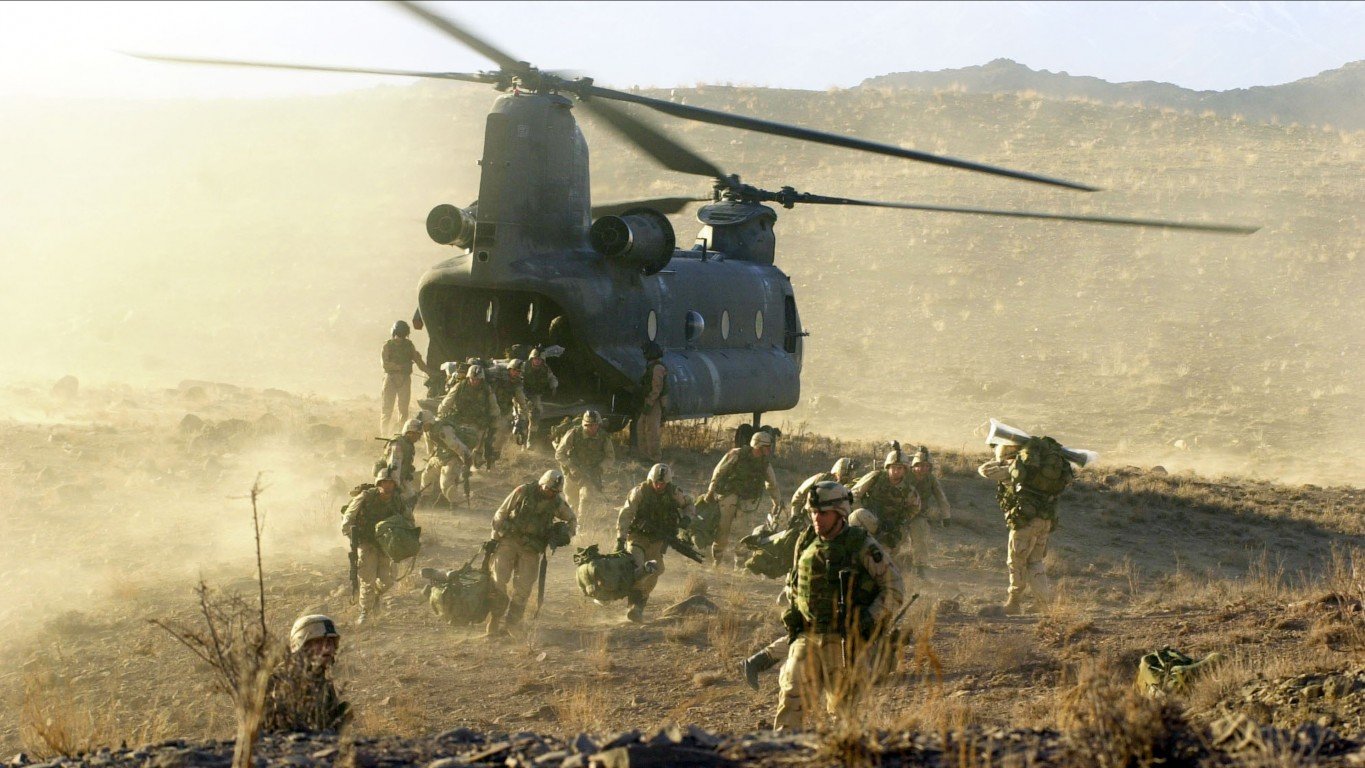
11. Afghanistan War
> U.S. military deaths: 2,218
> U.S. battle deaths: 1,833
> U.S. deaths outside combat: 385
> U.S. service members involved: N/A
> Non-mortal wounds: 20,093
> Duration: 2001-2021
After the 9/11 terrorist attacks, President George W. Bush demanded the Taliban, an ultra-conservative Islamist group controlling Afghanistan, extradite Osama bin Laden, the mastermind of the attacks and the leader of the al-Qaeda terrorist grop. An even larger coalition, including all of NATO countries, participated in Operation Enduring Freedom, which expelled the Taliban from major population centers.
Formal combat operations officially ended in 2014, when responsibility for the nation’s security was handed over to the Afghan government. But a Taliban offensive routed the Afghan military. The conflict officially ended in August 2021, when the U.S. and the Taliban signed an agreement and President Joe Biden ordered U.S. troops to withdraw and ended the longest American war.
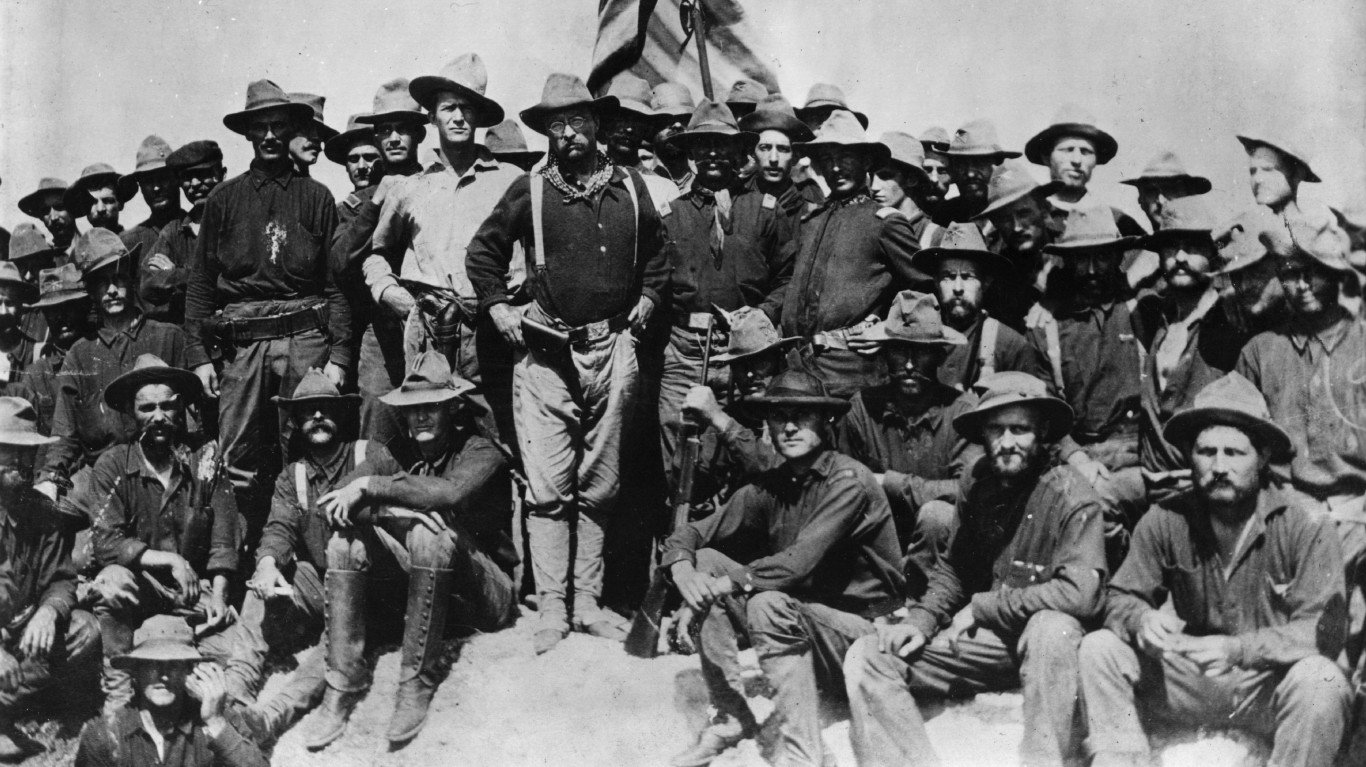
10. Spanish-American War
> U.S. military deaths: 2,446
> U.S. battle deaths: 385
> U.S. deaths outside combat: 2,061
> U.S. service members involved: 306,760
> Non-mortal wounds: 1,662
> Duration: 1898-1902
“Remember the Maine, the hell with Spain!” was the rallying cry for the U.S. in its battle with Spain. The battleship Maine was docked in the port of Havana to protect U.S. citizens and property in Cuba. Cuba was waging a war of independence from Spain, and American sentiment favored the Caribbean nation. On Feb. 15, 1898, an explosion on the Maine sank the ship and killed 260 crew members. Although it was never determined who destroyed the ship, the U.S. declared war on Spain.
The U.S. won and Spain agreed to hand over Puerto Rico, Guam, and the Philippines Islands to the U.S., along with temporary control of Cuba.

9. Iraq War
> U.S. military deaths: 5,482
> U.S. battle deaths: 4,505
> U.S. deaths outside combat: 977
> U.S. service members involved: N/A
> Non-mortal wounds: 31,994
> Duration: 2003-2011
In the aftermath of the 9/11 terrorist attacks, President George W. Bush asked Congress for the authority to invade Iraq and topple its dictator, Saddam Hussein. Bush and his advisor claimed Iraq was in possession or building weapons of mass destruction as well as possibly had ties to al Qaeda. Hussein and his government were quickly toppled in a “shock and awe” campaign.
Soon after, tensions stirred up between the rival Shias and Sunnis and an insurgency continued against coalition forces. The U.S. troop build-up in Iraq reached 170,000 by 2007. In 2008, Bush agreed to withdraw U.S. combat troops, a process that was completed under President Barack Obama in 2011. The U.S. never found WMDs in Iraq.
[in-text-ad-2]
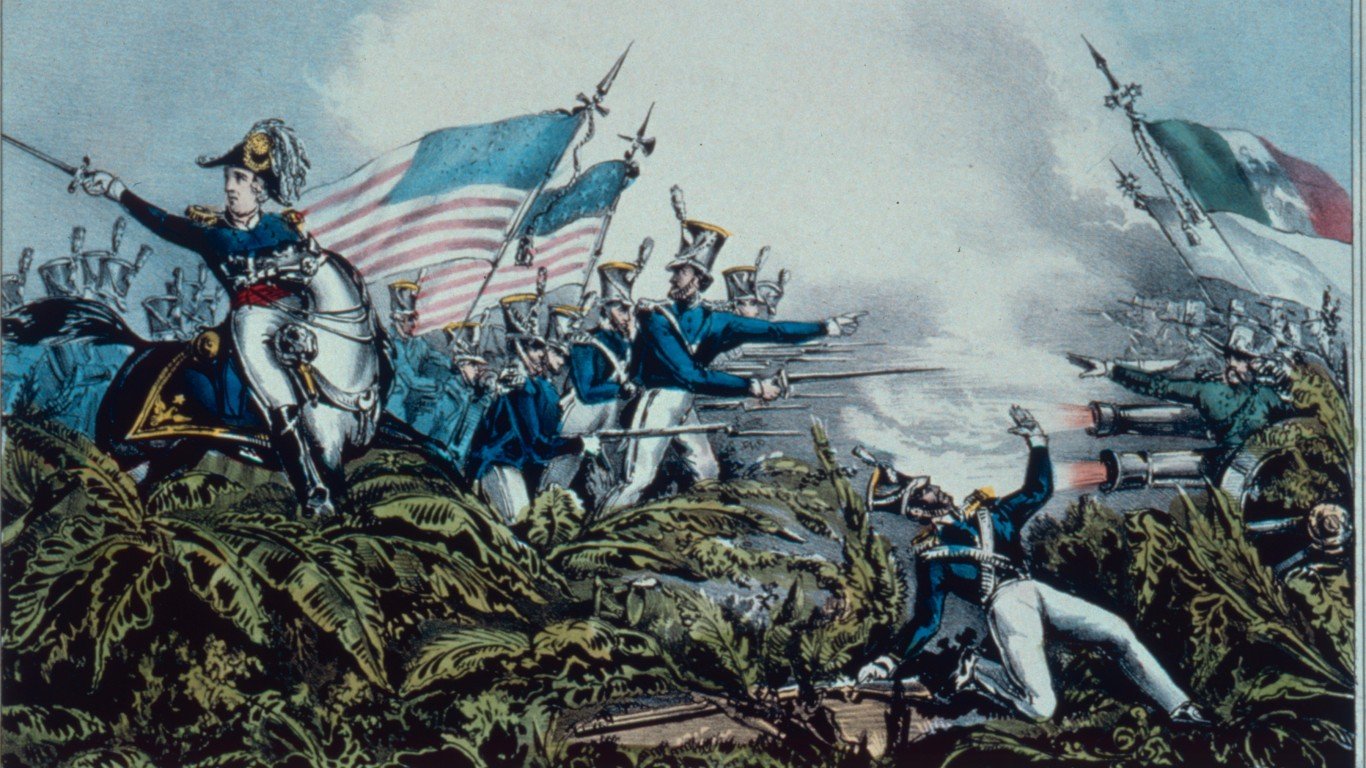
8. Mexican War
> U.S. military deaths: 13,283
> U.S. battle deaths: 1,733
> U.S. deaths outside combat: 11,550
> U.S. service members involved: 78,718
> Non-mortal wounds: 4,152
> Duration: 1846–1848
Tensions between Mexico and the U.S. flared when Texas won its independence from Mexico in 1836. The U.S. was initially reluctant to annex Texas as it was another state supporting slavery. At the same time, Mexico initiated a series of border raids to discourage the U.S. from incorporating Texas. When President James K. Polk was elected, however, he supported the Manifest Destiny doctrine, which said that the U.S.’s destiny was to expand to the Pacific Ocean.
On April 25, 1846, Mexican forces attacked a group of U.S. forces in a disputed zone under the command of Zachary Taylor, killing a dozen soldiers. On May 13, 1846, the U.S. declared war on Mexico. When the war ended, Mexico ceded about a third of its territory, which included all of California, Utah, Nevada, Arizona, and New Mexico.
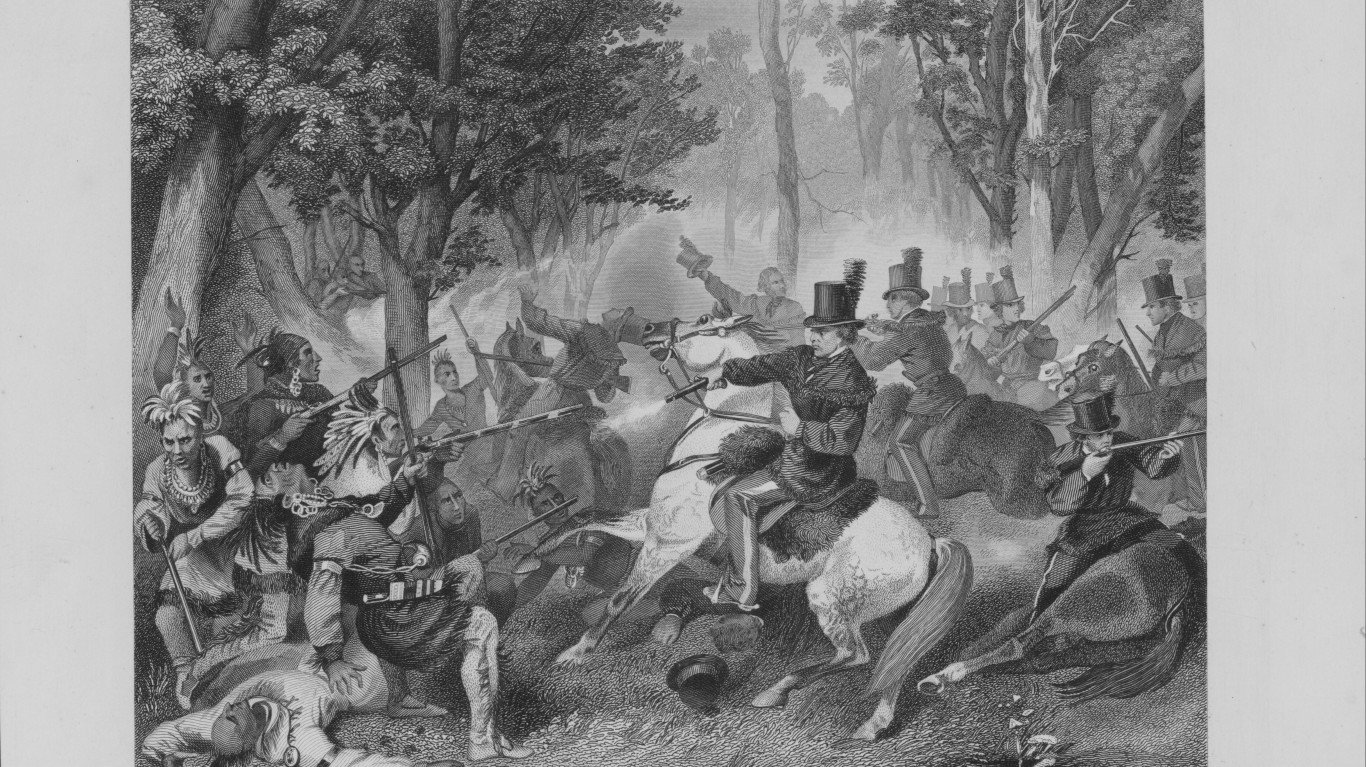
7. War of 1812
> U.S. military deaths: 15,000
> U.S. battle deaths: 2,260
> U.S. deaths outside combat: 12,740
> U.S. service members involved: 286,730
> Non-mortal wounds: 4,505
> Duration: 1812-1815
Not long after the Revolutionary War, U.S. forces and the British forces tangled again. Instigated in part by British attempts to block trade between the U.S. and France as well as differences over territorial expansion, the U.S. declared war on Britain in June 1812.
Britain had a superior Navy and won several major battles, including burning the nation’s capital in Washington, D.C. Yet victories in New York, Baltimore, and New Orleans repelled the British, and the war came to an end under the Treaty of Ghent on Feb. 17, 1815. The War of 1812 boosted American morale and furthered the country’s desire to expand.
[in-text-ad]

6. American Revolution
> U.S. military deaths: 21,435
> U.S. battle deaths: 4,435
> U.S. deaths outside combat: 17,000
> U.S. service members involved: 217,000
> Non-mortal wounds: 6,188
> Duration: 1775-1783
Simmering tensions between the 13 colonies and the British empire finally came to a head in 1775, when British troops and colonial militiamen battled in Lexington and Concord. Even before that pivotal event, in 1770, British officers fired on colonists, killing five, in what is known as the Boston Massacre. In 1775, the Second Continental Congress convened in Philadelphia and declared the colonies independence from England and the war began in earnest.
After hard-fought battles over the course of eight years, the conflict was decided when colonial forces won the Battle of Yorktown. Under the Treaty of Paris signed in 1783, Britain formally relinquished its control over the fledgling American nation.
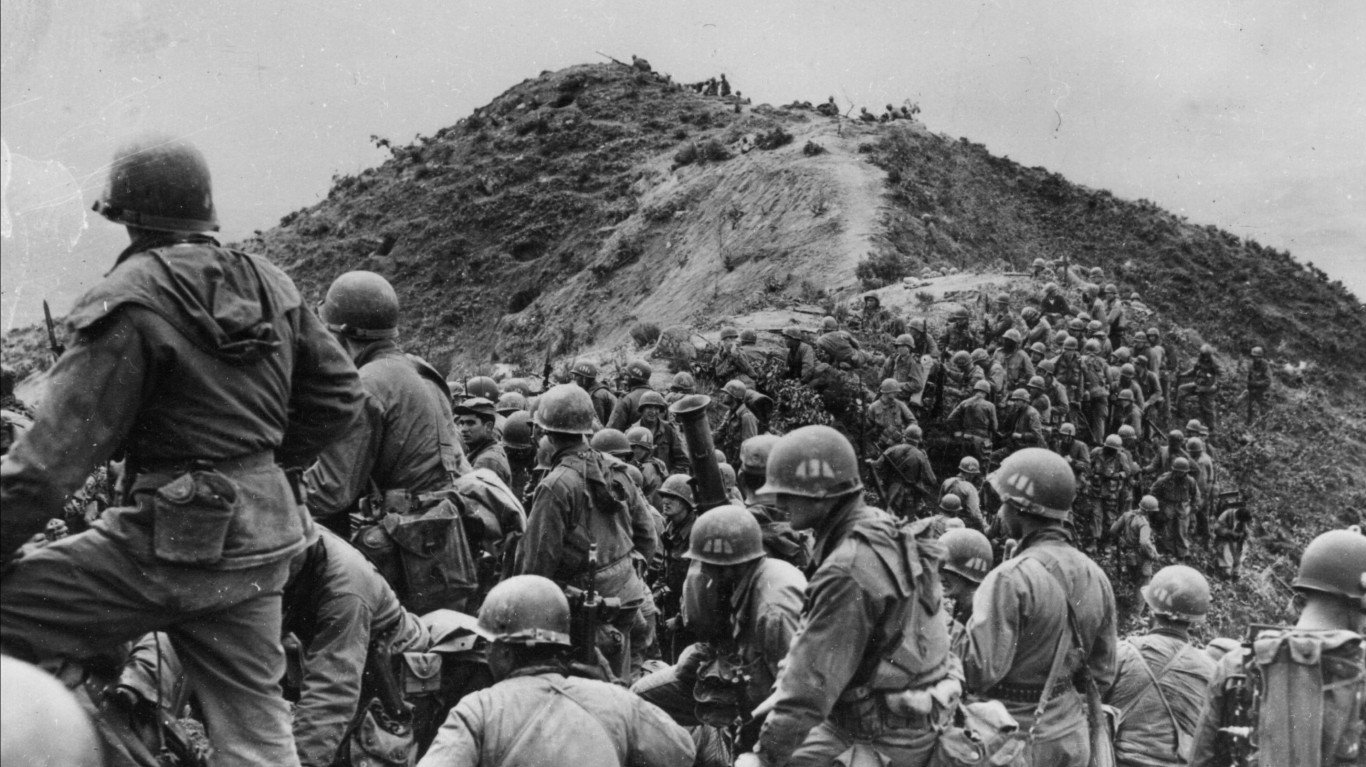
5. Korean War
> U.S. military deaths: 54,246
> U.S. battle deaths: 33,739
> U.S. deaths outside combat: 20,507
> U.S. service members involved: 5,720,000
> Non-mortal wounds: 103,284
> Duration: 1950-1953
Often called the “Forgotten War,” the Korean War was the first war during the Cold War. It began when the Soviet-backed North Korean People’s Army in the north attacked the pro Western Democratic People’s Republic of Korea to the south in 1950. U.S. troops entered the action on the behalf of South Korea with the aim of stopping the spread of communism.
The conflict ended in a stalemate, when both sides agreed to a ceasefire in 1953. Today, the ceasefire that established the 38th parallel as the boundary between the countries on the Korean Peninsula remains.
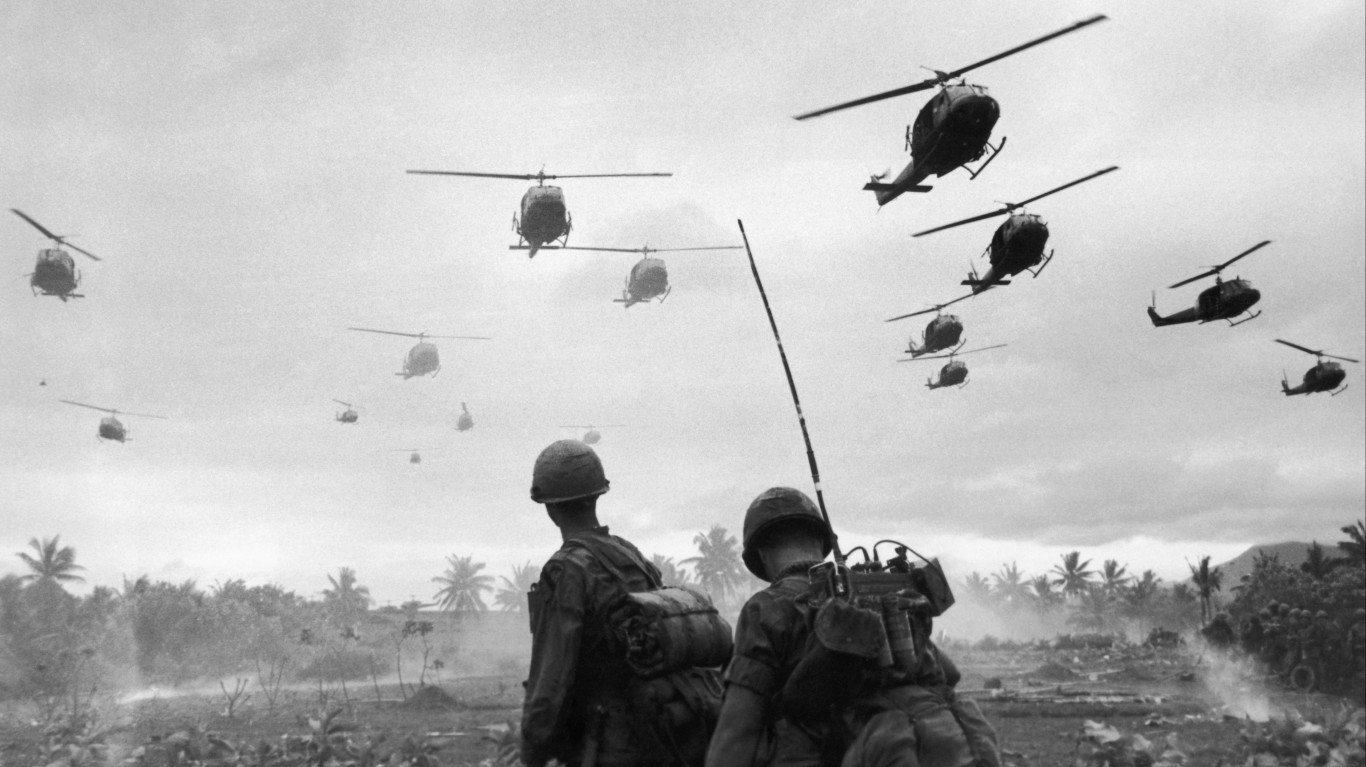
4. Vietnam War
> U.S. military deaths: 90,220
> U.S. battle deaths: 47,434
> U.S. deaths outside combat: 42,786
> U.S. service members involved: 8,744,000
> Non-mortal wounds: 153,303
> Duration: 1964-1975
Although America’s role in the Vietnam War formally started in 1964, the U.S. had been involved in the conflict between the communist-leaning North and the West-leaning South before that date. President John F. Kennedy supported the “domino theory,” which suggested that if one Southeast Asian country fell to communism, others would, too. By 1962, the U.S. had 9,000 troops in the country.
In 1964, North Vietnam attacked two U.S. destroyers in the Gulf of Tonkin, prompting President Lyndon B. Johnson, with Congress’s support, to declare the Gulf of Tonkin Resolution. The resolution gave the president broad powers to wage war, setting off one of the longest, bloodiest, and most controversial conflicts in U.S. history. In 1973, President Richard Nixon signed the Paris Peace Accords, and by 1975, the U.S. withdrew as communist troops effectively took power over Vietnam.
[in-text-ad-2]
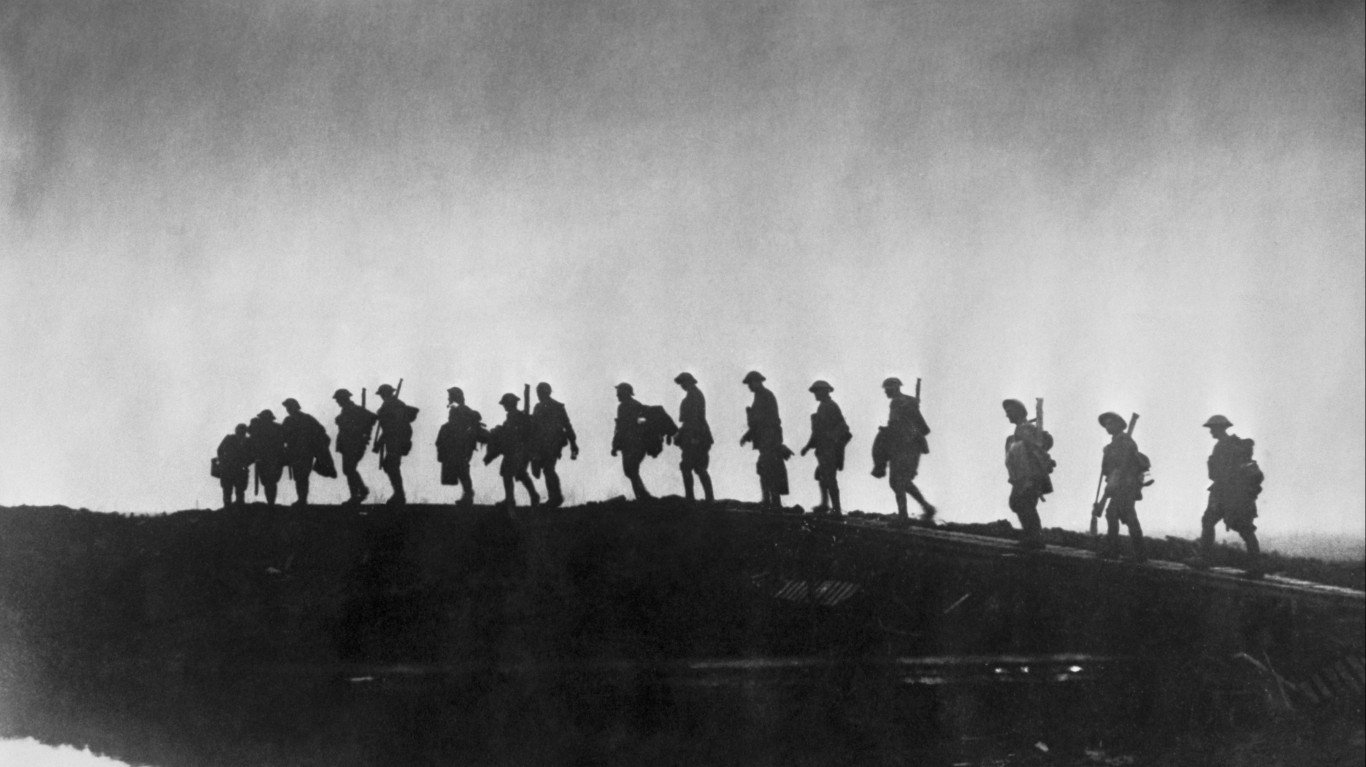
3. World War I
> U.S. military deaths: 116,516
> U.S. battle deaths: 53,402
> U.S. deaths outside combat: 63,114
> U.S. service members involved: 4,734,991
> Non-mortal wounds: 204,002
> Duration: 1917-1918
The U.S. was initially neutral when World War I broke out, but many were sympathetic to Britain and its allies. In 1914, the assasination of the heir to the throne of the Austria-Hungarian empire set off pitched battles between the Central Powers (led by Germany, Austria-Hungary, and the Ottoman Empire) and the Allies (led by France, Great Britain, and Russia). The conflict stretched beyond Europe to the Middle East.
A series of events drew the U.S. into the war, including German submarine attacks on passenger and merchant ships and a German telegram that revealed a plan to return Mexico the land it lost in the Mexican-American War if it supported Germany. In 1917, America officially entered the war, which reshaped the map of Europe. Although its participation lasted only a year, more than 53,000 soldiers died in the war.
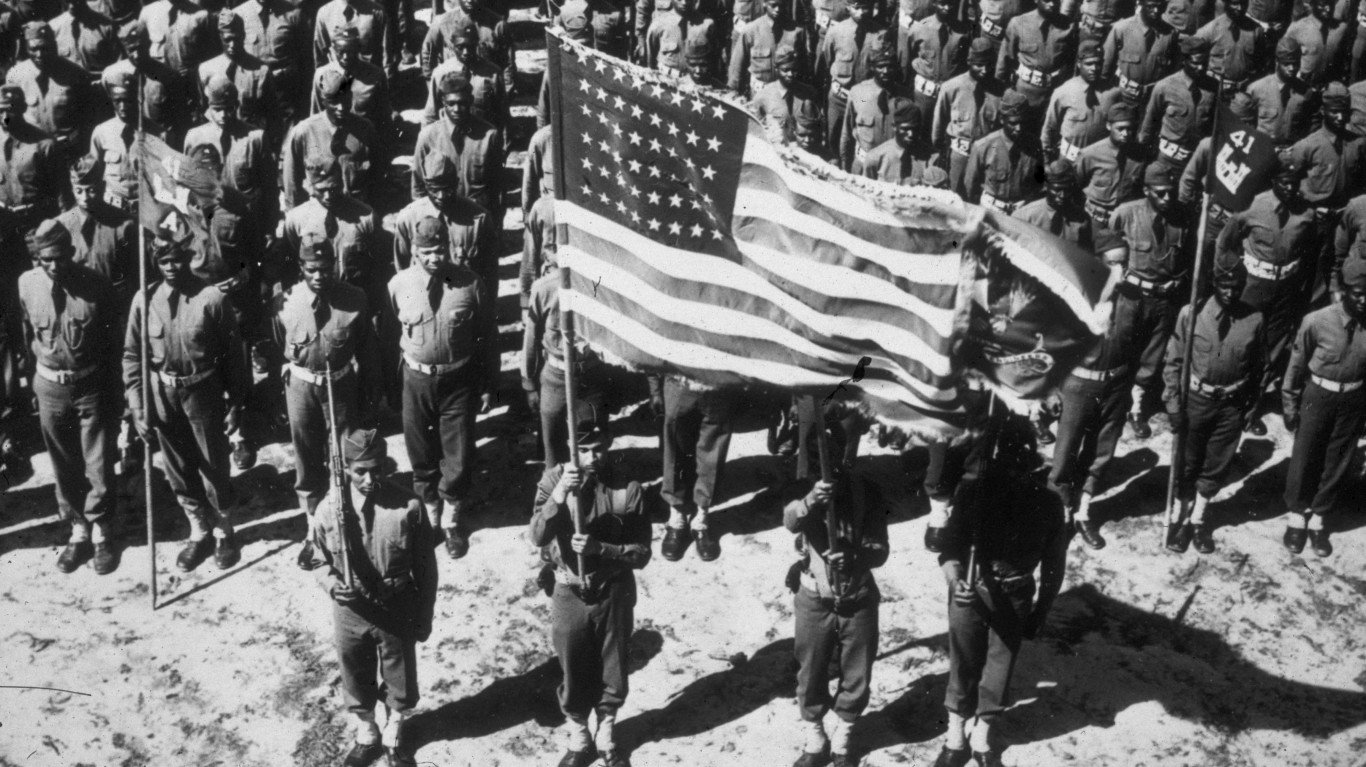
2. World War II
> U.S. military deaths: 405,399
> U.S. battle deaths: 291,557
> U.S. deaths outside combat: 113,842
> U.S. service members involved: 16,112,566
> Non-mortal wounds: 670,846
> Duration: 1941-1945
World War II began in 1939 with Hitler’s invasion of Poland, prompting Britain and France to declare war on Germany. The U.S. was drawn into the war after the Japanese bombed Pearl Harbor in 1941. The U.S. declared war on Japan and the Axis allies, including Germany. Two pivotal battles threw the war in the U.S.’s favor: The Battle of Midway in the Pacific, where the American fleet scored a victory against Japan, and the famous D-Day operation in France. Over the course of six years, between 45 and 60 million people were killed, including 6 million Jews in concentration camps.
In 1945, President Harry S. Truman, along with Winston Churchill and Josef Stalin, agreed to a peace treaty with Germany. Under the agreement, Germany was divided into four zones controlled by the Soviet Union, the U.S., England, and France. After the U.S. dropped atomic bombs on Hiroshima and Nagasaki, Japan surrendered. The legacy of WWII was the spread of communism to Eastern Europe and the long-running Cold War between the Soviet Union and the U.S.
[in-text-ad]
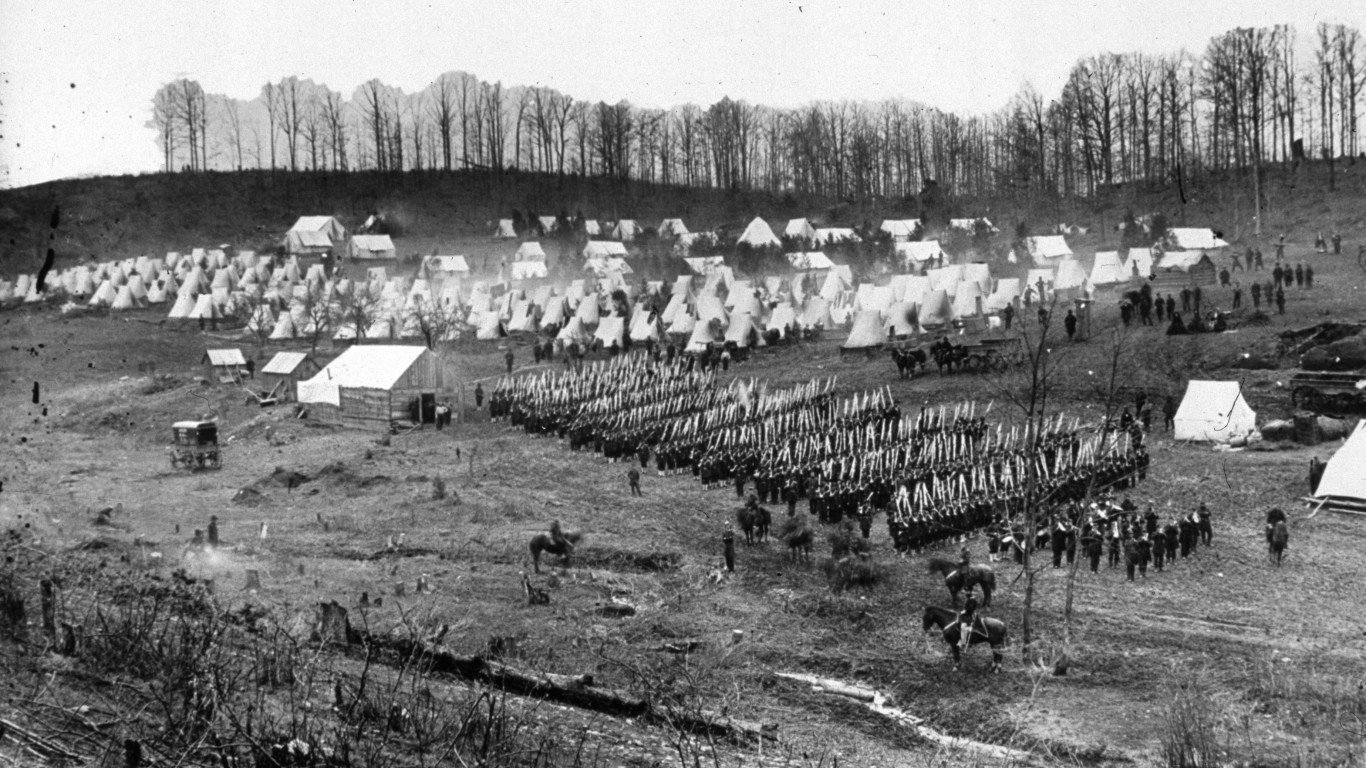
1. Civil War
> U.S. military deaths: 498,332
> U.S. battle deaths: 214,938
> U.S. deaths outside combat: 283,394
> U.S. service members involved: 2,213,363
> Non-mortal wounds: Union 281,881, Confederacy N/A
> Duration: 1861-1865
The issue of slavery had led to civil war in the U.S. between the South, which supported slavery, and the North, which sought to abolish it. The decades-long tension over the issue spilled into armed conflict when rebel forces from the Southern states attacked Fort Sumter in Charleston, South Carolina, kicking off the bloodiest war on U.S. soil. The North hoped for a quick victory, but those hopes were dashed when the Confederacy won over Union forces at the First Battle of Bull Run, forcing the Union to retreat to Washington, D.C.
A protracted, bloody civil war ensued. The tide turned in the Union’s favor when Ulysses S. Grant won the Battle of Vicksburg and took control of the Union forces. Victories at Gettysburg and Sherman’s March Through Georgia sealed the Union’s triumph, which officially ended when Robert E. Lee surrendered to Grant at Appomattox.
Essential Tips for Investing: Sponsored
A financial advisor can help you understand the advantages and disadvantages of investment properties. Finding a qualified financial advisor doesn’t have to be hard. SmartAsset’s free tool matches you with up to three financial advisors who serve your area, and you can interview your advisor matches at no cost to decide which one is right for you. If you’re ready to find an advisor who can help you achieve your financial goals, get started now.
Investing in real estate can diversify your portfolio. But expanding your horizons may add additional costs. If you’re an investor looking to minimize expenses, consider checking out online brokerages. They often offer low investment fees, helping you maximize your profit.
Thank you for reading! Have some feedback for us?
Contact the 24/7 Wall St. editorial team.
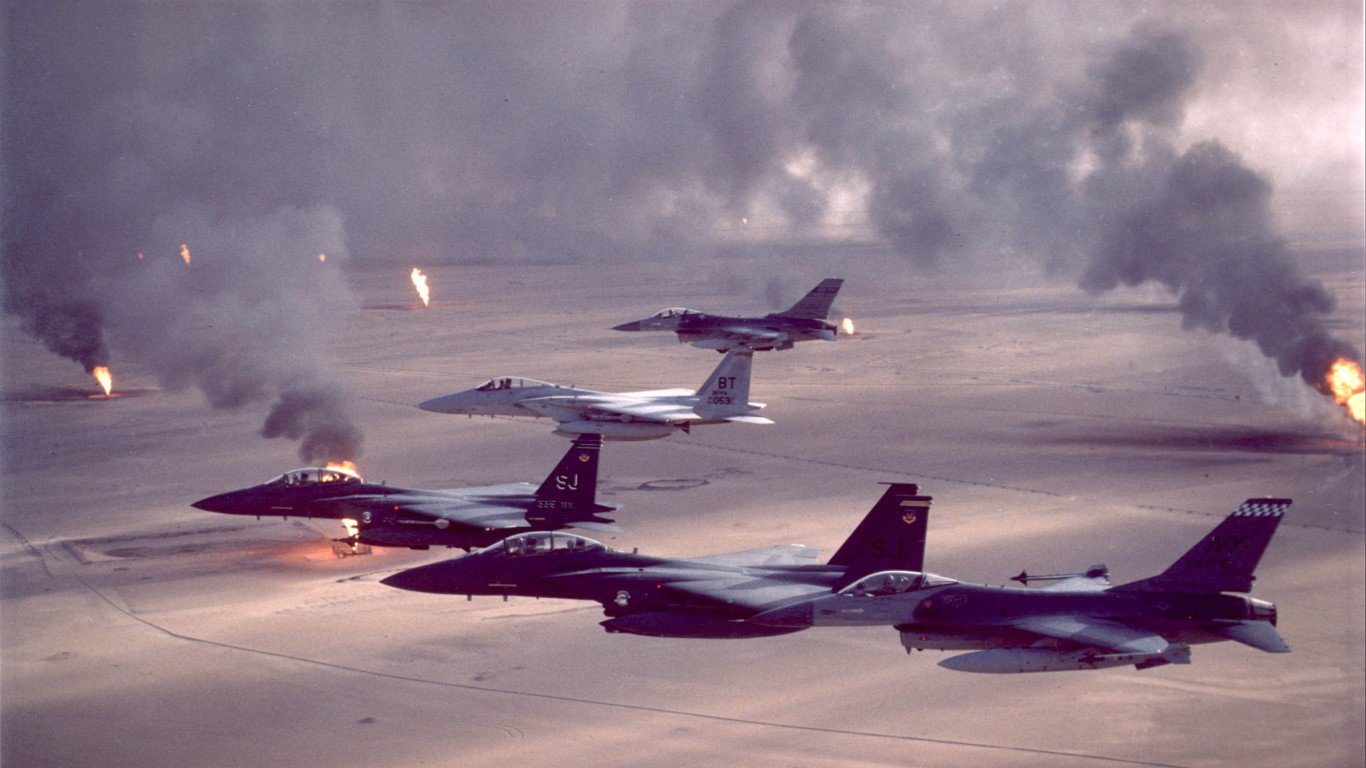
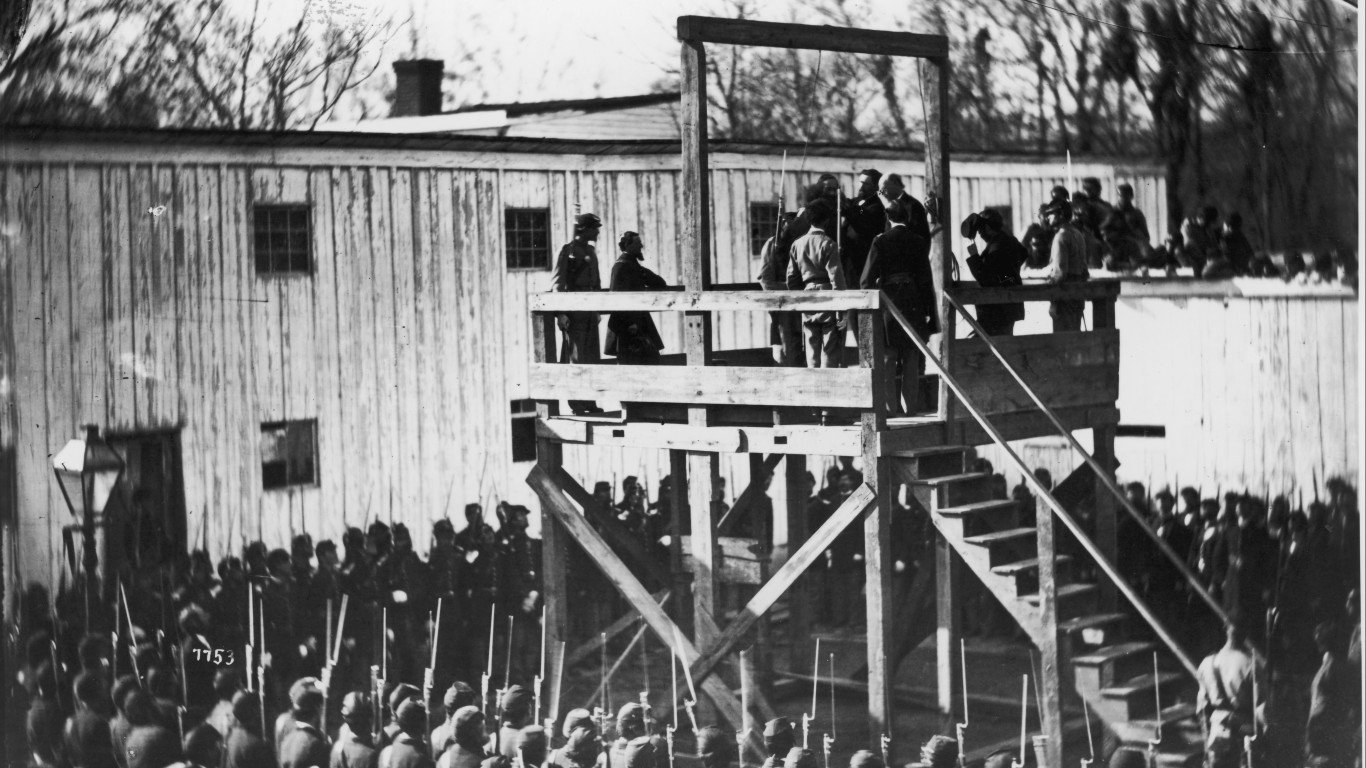 24/7 Wall St.
24/7 Wall St.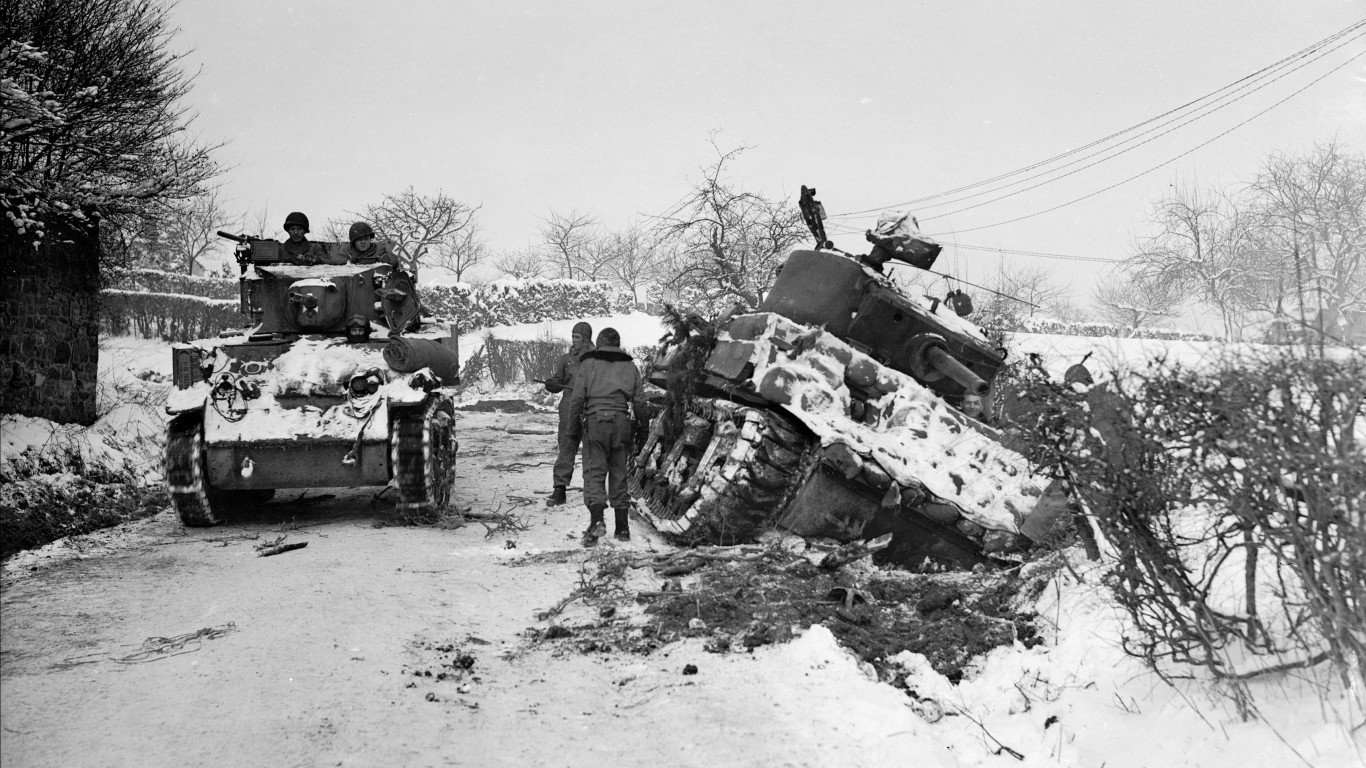 24/7 Wall St.
24/7 Wall St.


